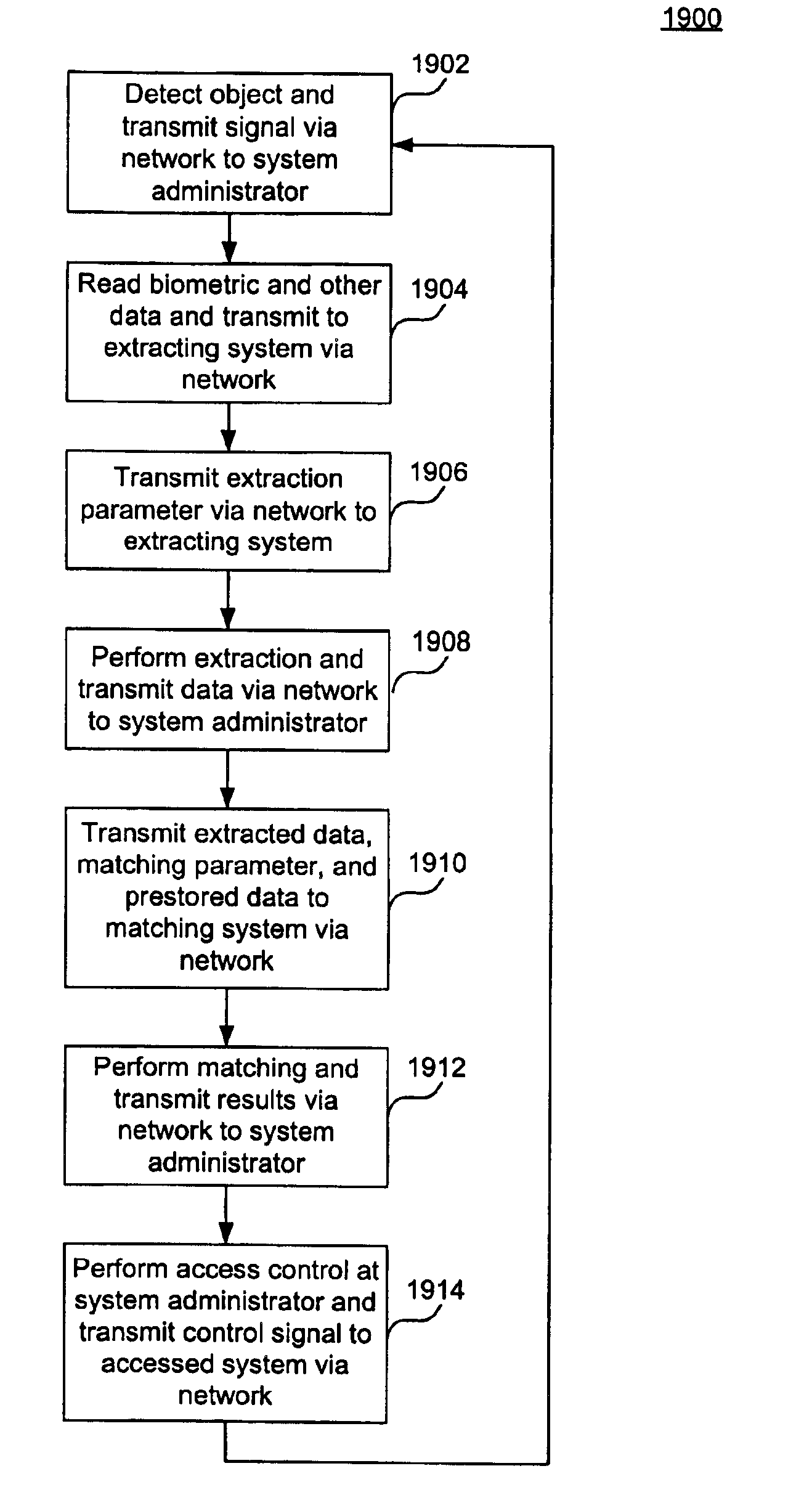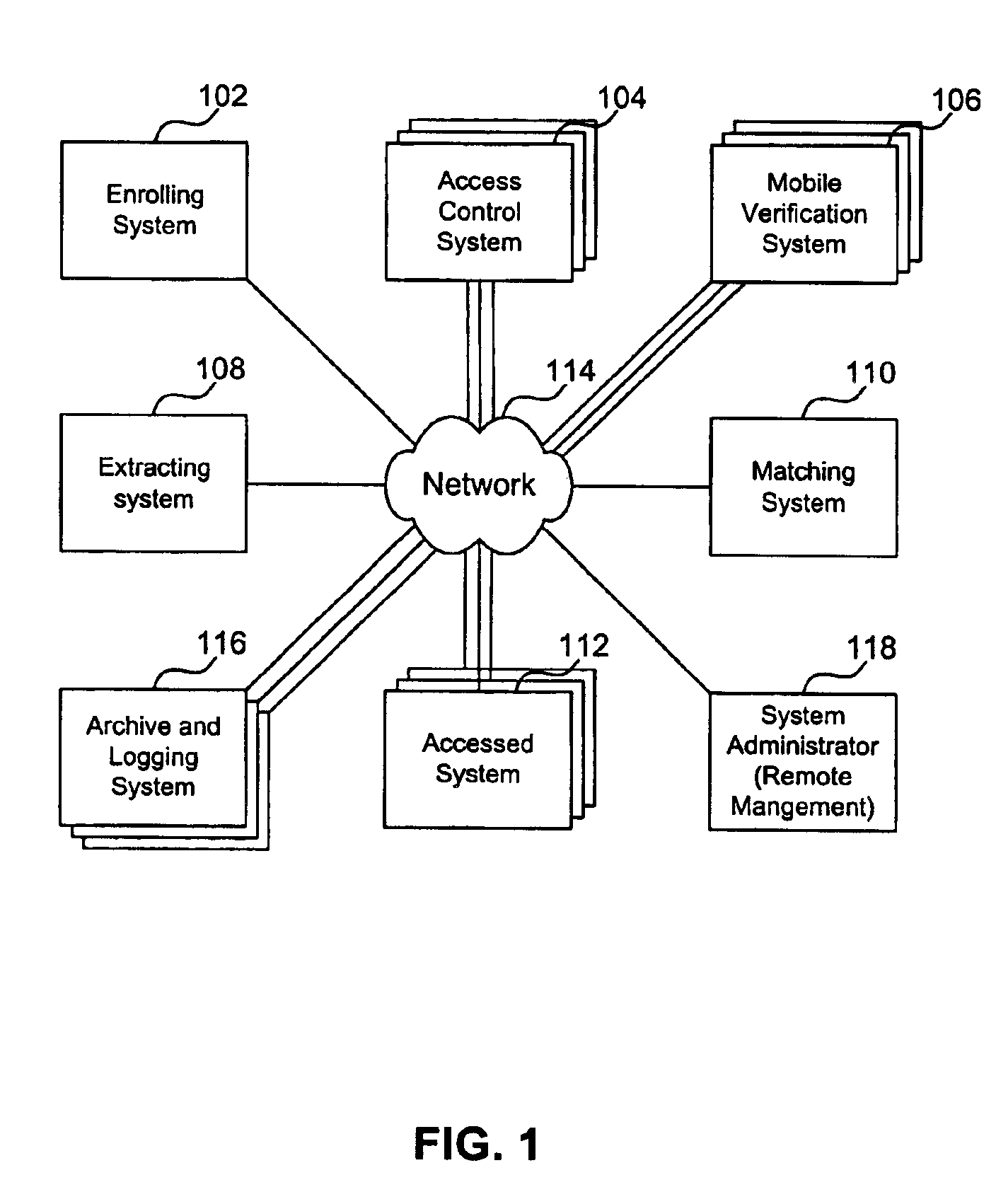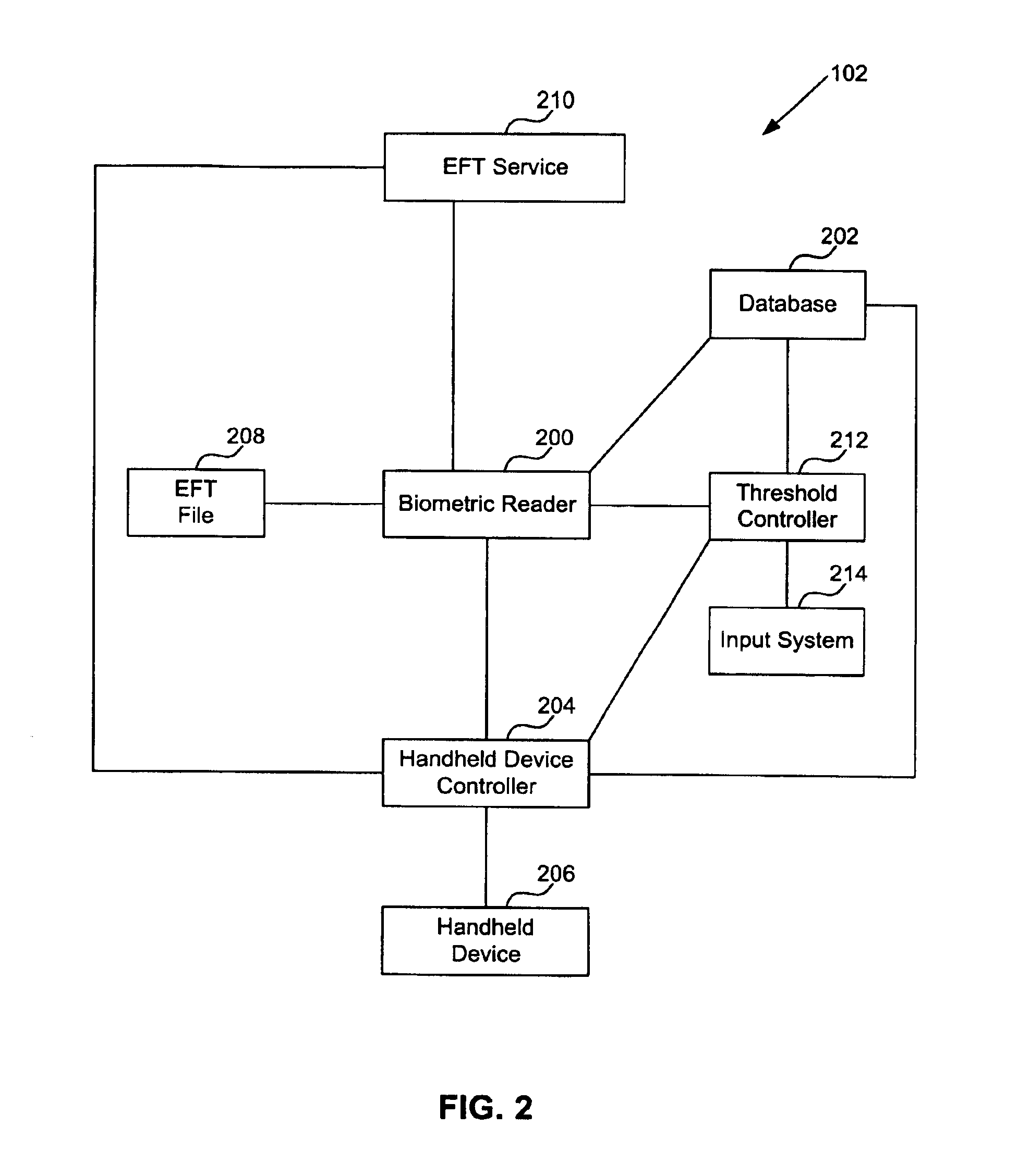Systems and methods utilizing biometric data
a biometric and data technology, applied in the field of access control and remote identity verification, can solve problems such as becoming prohibitive aspects of access control, and achieve the effect of reducing the number of false rejections and reducing the rejection of more difficult to read fingerprints
- Summary
- Abstract
- Description
- Claims
- Application Information
AI Technical Summary
Benefits of technology
Problems solved by technology
Method used
Image
Examples
Embodiment Construction
Overview and Terminology
[0038]Some embodiments of the present invention are directed to systems and methods that perform access control and mobile identity verification, including examples utilizing a handheld device, with a memory that stores at least biometric data, such as minutia. The handheld device may also store other data, such as a threshold value and Wiegand data. The data may be stored in a memory, a magnetic strip, a machine-readable code, a bar code, or in all of these devices associated with the handheld device. The handheld device may be a SmartCard or the like.
[0039]One example of biometric data that may need the threshold value is a value indicative of a fingerprint image capture quality of an individual. For example, a low value can indicate a relative poor image capture quality, while a high value can indicate a relative high capture quality. Low threshold values may be appropriate for individuals with difficult to read fingerprints, such as those with dry fingers...
PUM
 Login to View More
Login to View More Abstract
Description
Claims
Application Information
 Login to View More
Login to View More - R&D
- Intellectual Property
- Life Sciences
- Materials
- Tech Scout
- Unparalleled Data Quality
- Higher Quality Content
- 60% Fewer Hallucinations
Browse by: Latest US Patents, China's latest patents, Technical Efficacy Thesaurus, Application Domain, Technology Topic, Popular Technical Reports.
© 2025 PatSnap. All rights reserved.Legal|Privacy policy|Modern Slavery Act Transparency Statement|Sitemap|About US| Contact US: help@patsnap.com



